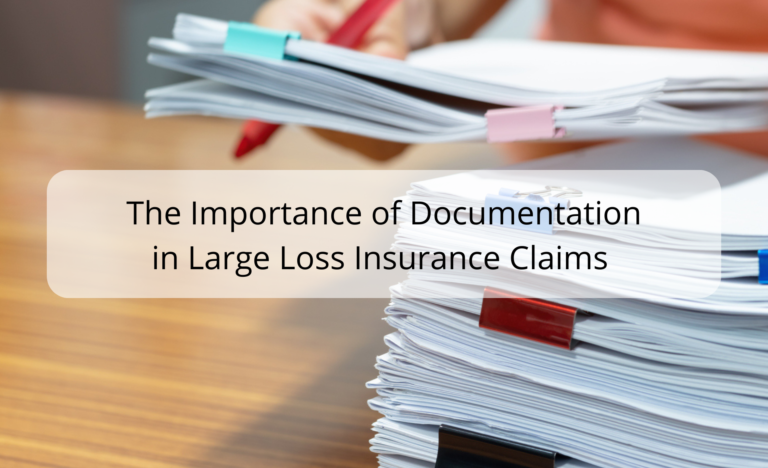When disaster strikes and a large loss occurs, such as from a fire, flood, or hurricane, the aftermath can be overwhelming. Beyond the immediate emotional and physical toll, property owners must navigate the complex process of filing an insurance claim to recover their losses. One of the most critical aspects of this process is documentation. Proper documentation is essential to substantiate the claim and ensure that you receive the maximum compensation to which you are entitled.
Understanding Large Loss Claims
Large loss claims involve significant damage to property, often exceeding tens of thousands or even millions of dollars. These claims can be due to various events such as fires, floods, hurricanes, earthquakes, or other catastrophic incidents. Given the magnitude of the damage, insurance companies scrutinize these claims closely, making thorough documentation essential for a successful outcome.
Documentation serves multiple purposes in the claims process:
- Proof of Loss: Documentation provides evidence of the extent and nature of the damage.
- Basis for Valuation: Detailed records help establish the value of the lost or damaged property.
- Compliance: Proper documentation ensures compliance with policy requirements and legal standards.
- Negotiation: Comprehensive records strengthen your position in negotiations with the insurance company.
The Role of Documentation in Large Loss Claims
The primary role of documentation in large loss claims is to prove the extent of the damage. This includes both visible and hidden damage. Photos and videos are invaluable in capturing the immediate aftermath of the loss. Take pictures and record videos from multiple angles to document the full scope of the damage.
In addition to visual evidence, written descriptions are crucial. Detailed notes describing the damage to specific areas and items can provide context that photos and videos alone cannot. For instance, noting the depth of water in a flooded area or the degree of charring on structural elements in a fire can be important details.
Establishing the Value of the Loss
Accurately establishing the value of the loss is essential for receiving adequate compensation. This involves documenting the pre-loss condition and value of the damaged property. Inventory lists, receipts, and appraisals are critical components of this documentation.
For personal property, maintain an up-to-date inventory list that includes descriptions, purchase dates, and values of items. For valuable items, such as artwork, jewelry, or specialized equipment, professional appraisals can be particularly useful. In commercial settings, detailed records of equipment, machinery, and inventory are necessary to substantiate claims.
Ensuring Compliance with Policy Requirements
Insurance policies often have specific requirements for documentation and insurance claim submission. Failing to meet these requirements can result in delays or denials of claims. Thorough documentation ensures that you comply with these policy stipulations.
Review your insurance policy carefully to understand the documentation requirements. This may include providing proof of ownership, maintenance records, and documentation of any previous repairs or upgrades. Keeping organized and accessible records can streamline the claims process and help avoid potential issues.
Strengthening Your Negotiation Position
Comprehensive documentation strengthens your position in negotiations with the insurance company. Insurers aim to minimize their payouts, and detailed records can counter attempts to undervalue your claim.
When negotiating, be prepared to present a well-organized and detailed claim package. This should include all photographic and video evidence, written descriptions, inventory lists, receipts, appraisals, and any other relevant documentation. A thorough and meticulously documented claim leaves little room for dispute and can expedite the settlement process.
Effective Documentation Practices
- Take Immediate Action
Start documenting the damage as soon as it is safe to do so. The more immediate the documentation, the more accurately it reflects the extent of the damage. Begin by taking photographs and videos before any cleanup or repairs start.
- Be Thorough and Detailed
Ensure that your documentation is comprehensive and detailed. Capture all affected areas and items, and include close-up shots of specific damages. Write detailed descriptions to accompany visual evidence, noting the condition and context of the damage.
- Maintain an Organized System
Keep all documentation organized and easily accessible. Create a filing system for all photos, videos, receipts, inventory lists, and correspondence related to the claim. Digital tools, such as cloud storage and document management software, can help keep everything in one place.
- Use Professional Services
In some cases, hiring professional services can enhance your documentation. For instance, forensic accountants can help document financial losses, while restoration experts can provide detailed damage assessments and repair estimates. Professional appraisals can substantiate the value of high-value items.
- Keep Regular Records
Regularly updating your property records can simplify the documentation process in the event of a large loss. Maintain current inventories, receipts, and appraisals, and document any maintenance or upgrades. This proactive approach can significantly reduce the burden of documentation after a disaster.
The Role of Public Adjusters in Documentation
Public adjusters are licensed professionals who work on behalf of policyholders to manage and negotiate insurance claims. One of their key roles is to assist with documentation. Public adjusters have the expertise to ensure that all necessary documentation is collected, organized, and presented effectively. They conduct thorough damage assessments, identifying both visible and hidden damages. They document the extent of the damage with detailed photos, videos, and written descriptions.
Public adjusters can help establish the value of the loss by compiling comprehensive inventory lists, obtaining professional appraisals, and calculating the cost of repairs and replacements. Their detailed documentation strengthens your claim and supports a fair valuation. Their expertise ensures that no aspect of the loss is overlooked.
Your adjuster will also ensure that all documentation complies with policy requirements and legal standards. They prepare and submit detailed claim packages to the insurance company and handle all communications and negotiations. Their professional documentation and advocacy increase the likelihood of a successful claim.
Enhance the Success of Your Claim
Documentation is a critical component of large loss insurance claims. Proper documentation proves the extent of the damage, establishes the value of the loss, ensures compliance with policy requirements, and strengthens your negotiation position. Effective documentation practices, such as immediate action, thoroughness, organization, and professional assistance, can significantly enhance the success of your claim.
At D.A. Lamont Public Adjusters, we understand the importance of documentation in large loss claims. Our experienced team is dedicated to providing the expertise and support you need to navigate the claims process successfully. Contact us today for assistance with documenting your loss and ensuring that you receive the compensation you deserve.


